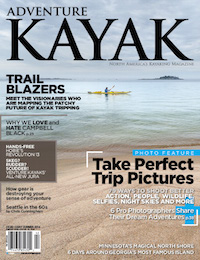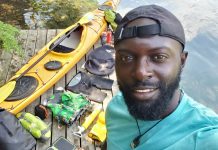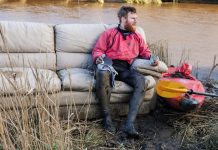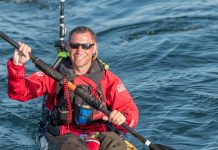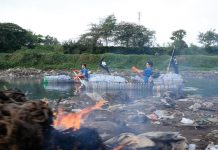Skin-on-frame kayak builder, photographer, filmmaker, expedition kayaker, climber, musician, wilderness survival instructor and primitive skills guide—if we had to put a label on Kiliii Fish, it might be outdoor adventure Renaissance man. For Kiliii, 28, teaching, shooting and paddling are all extensions of the same creative urge, a drive nurtured by the wild frontier of the Pacific coast and stoked by a fascination with traditional techniques. We caught up with the Seattle-based artist to learn how he balances modern know-how with 5,000 years of primal expertise.
WHO kindled your interest in primitive skills?
My Nanai grandma used to tell me stories about her childhood in siberia. Her people were hunter-gatherers, living close to the land. one story really stuck with me—she and her dad caught a fish that was bigger than their boat. she would have been paddling a 13-foot canoe and the fish they caught was a kaluga sturgeon, one of the largest freshwater fish in the world. Being from the border of a country where it’s still not cool to be indigenous, my parents weren’t really into the traditional stuff. But for my brother and I, who grew up here, it was great for our imagination.
WHEN did you realize the power of what you teach?
I’ve taught skin-on-frame workshops to native Iñupiat and Yupik kids in Alaska whose traditional technology these incredibly lightweight, high performance boats originally come from. they don’t understand how amazing it is, and how important the kayak was to their ancestors. For many native people, there’s a lot of hating who they are. There’s a huge lack of pride. It was eye opening and heartbreaking to see them look at a kayak that came from their ancestry—that they built with their own hands—and hear them say ‘wow, this is the coolest thing ever.’
WHERE do you find creative inspiration?
That quietness you get from being in the flow— not just in the zone of whatever sport you’re doing, but also being in the flow of nature—that inspires me. Sometimes the flow in sea kayaking is having an amazing ride on a wave. But other times it’s that quiet moment when you’re bobbing in the swell and there’s no distinction between you, your boat, the puffin in front of you, the wave and the sky—that place and that feeling become embedded in my photographs.

- Five W’s: Kayak Builder and Artist Kiliii Fish | Photo: Oliver Ludlow
WHY do you do this stuff?
That quietness you get from being in the flow— not just in the zone of whatever sport you’re doing, but also being in the flow of nature—that inspires me. Sometimes the flow in sea kayaking is having an amazing ride on a wave. But other times it’s that quiet moment when you’re bobbing in the swell and there’s no distinction between you, your boat, the puffin in front of you, the wave and the sky—that place and that feeling become embedded in my photographs.
WHAT is the downside to teaching survival?
When you’re doing primitive survival stuff, you spend a lot of time starving. There’s a lot of hungriness and suffering. After a few years of toughing it out, I moved to the Pacific Northwest. If you’re near an ocean, then there’s food to be had. Survival school itself wasn’t really sustainable financially—it’s hard, because anyone who wants to learn survival is generally broke. You teach it because you love it.
Learn more about Kiliii’s traveling skin-on-frame workshops at seawolfkayak.com. See his photos and films at kiliii.com.
